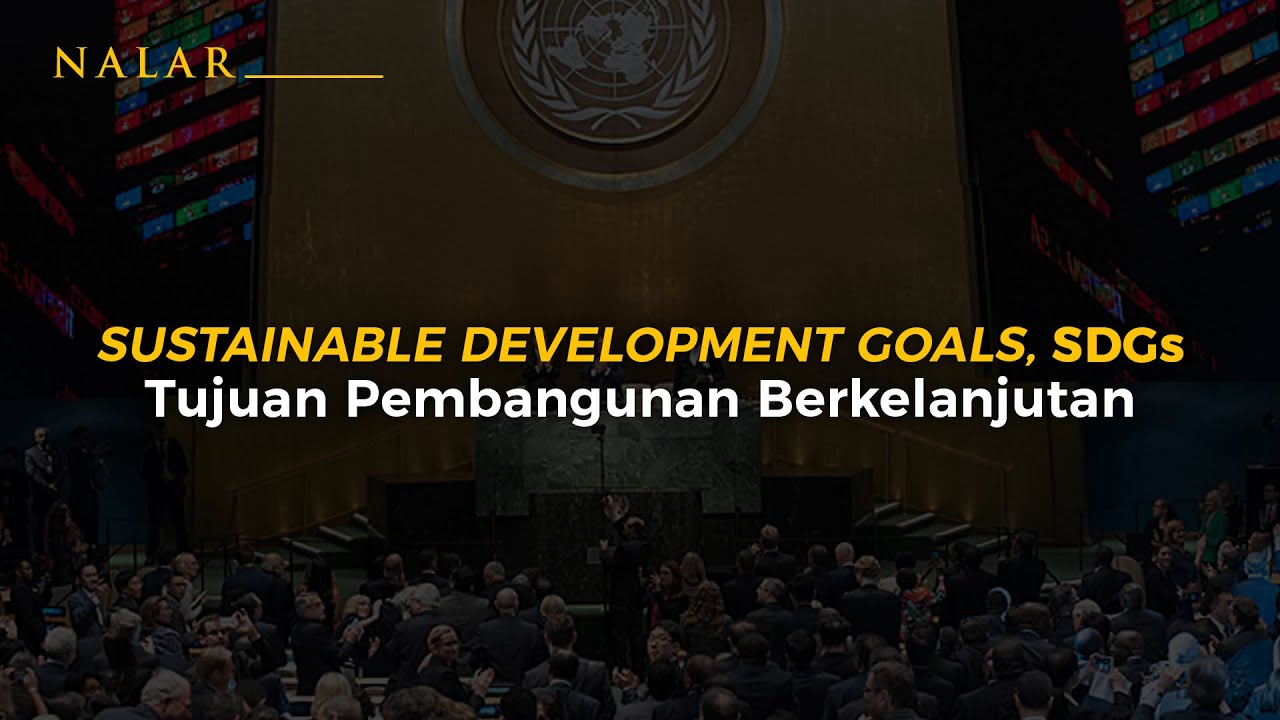NALAR Ep. 97. TANYA JAWAB SDGs
Summary
TLDRIn this episode, the speaker addresses key questions about sustainable development and the Sustainable Development Goals (SDGs) in Indonesia. They discuss the correlation between national policies and local initiatives, the challenges of balancing economic growth with environmental preservation, and the role of scientific research in shaping these goals. The speaker emphasizes the voluntary nature of the SDGs and the importance of effective governance and corporate responsibility in achieving sustainable outcomes. Ultimately, they advocate for a holistic approach to development that respects both economic needs and the planet's health, highlighting Indonesia's commitment to sustainability.
Takeaways
- 🌍 SDGs (Sustainable Development Goals) are voluntary commitments by UN member states, not mandatory obligations.
- 📜 Indonesia's implementation of SDGs is guided by Presidential Regulation No. 59/2017, integrating them into National and Regional Action Plans.
- 🏘️ The Ministry of Villages has initiated 'SDGs Desa' to localize SDGs and enhance rural development.
- ⚖️ There is an ongoing tension between economic growth and environmental sustainability, especially concerning the Omnibus Law on Job Creation.
- 🌱 The environment must be preserved alongside economic development; a balance is necessary for sustainable growth.
- 🛠️ Good governance is essential in managing development projects to ensure both economic and environmental responsibilities are met.
- 🧪 The formulation of SDGs was based on extensive scientific research and evidence, emphasizing the importance of data-driven policies.
- 🤝 Corporate Social Responsibility (CSR) should evolve into corporate accountability, ensuring businesses are held responsible for their environmental impact.
- 📈 Mainstreaming SDGs in Indonesia involves integrating them into national and local development planning, aligning them with constitutional mandates.
- 🌐 At the ASEAN level, SDGs are implemented through cooperative efforts among member states, focusing on mutual support and knowledge sharing.
Q & A
What is the main purpose of the discussion in this episode?
-The episode aims to clarify questions related to sustainable development and the Sustainable Development Goals (SDGs), enhancing understanding of their connection to global development agendas.
How are the SDGs implemented in Indonesia according to Presidential Regulation No. 59 of 2017?
-The regulation outlines the implementation of SDGs into the National Action Plan (RAN) and the Regional Action Plan (RAD), coordinating efforts between the central and local governments.
What is the relationship between the SDGs and the Ministry of Village's regulation on SDGs for villages?
-The Ministry of Village's regulation aims to localize SDGs by adding an additional goal, reinforcing the national implementation framework by ensuring that sustainable development reaches village levels.
What are the challenges mentioned regarding sustainable development in Indonesia?
-The discussion highlights the ongoing tension between economic development, facilitated by the Job Creation Law, and the potential environmental degradation from increased investments.
How does the speaker view the relationship between economic development and environmental sustainability?
-The speaker emphasizes that economic growth should not come at the expense of environmental destruction, advocating for a balanced approach where both can coexist through responsible governance.
What role does research play in the formulation of SDGs?
-SDGs are based on scientific evidence and data, with the formulation process involving extensive contributions from scientists and researchers to address environmental and social issues.
How is mainstreaming of SDGs achieved at different governmental levels in Indonesia?
-At the national level, SDGs are integrated into the Medium-Term National Development Plan (RPJMN), and at the regional level, they are incorporated into the Regional Medium-Term Development Plan (RPJMD).
What is the significance of corporate responsibility in sustainable development?
-Corporate responsibility extends beyond charitable donations; it involves ensuring that businesses operate sustainably, protect the environment, and treat workers fairly.
How is the coordination of SDGs managed at the ASEAN level?
-At the ASEAN level, SDGs are coordinated through informal cooperation among member countries, allowing for sharing experiences and best practices without binding agreements.
What is the underlying message about environmental stewardship in the context of SDGs?
-The speaker stresses that sustainable development requires a commitment to protecting the environment, as human survival and progress depend on maintaining the health of the planet.
Outlines

This section is available to paid users only. Please upgrade to access this part.
Upgrade NowMindmap

This section is available to paid users only. Please upgrade to access this part.
Upgrade NowKeywords

This section is available to paid users only. Please upgrade to access this part.
Upgrade NowHighlights

This section is available to paid users only. Please upgrade to access this part.
Upgrade NowTranscripts

This section is available to paid users only. Please upgrade to access this part.
Upgrade NowBrowse More Related Video

NALAR Ep. 47 APA ITU SUSTAINABLE DEVELOPMENT GOALS (TUJUAN PEMBANGUNAN BERKELANJUTAN)?

Kisi-kisi UTS Metode Pemberdayaan Masyarakat

How Tax Policies Can Help Achieve Net-Zero Emissions and Sustainable Development Goals (SDGs)

Why and how to teach the SDGs in Early Childhood | Natalie Haas | TEDxDonauinsel

NALAR Ep. 48. MENGIMPLEMENTASIKAN SDGs DI INDONESIA

SDG sectorial universality : all fields are covered
5.0 / 5 (0 votes)